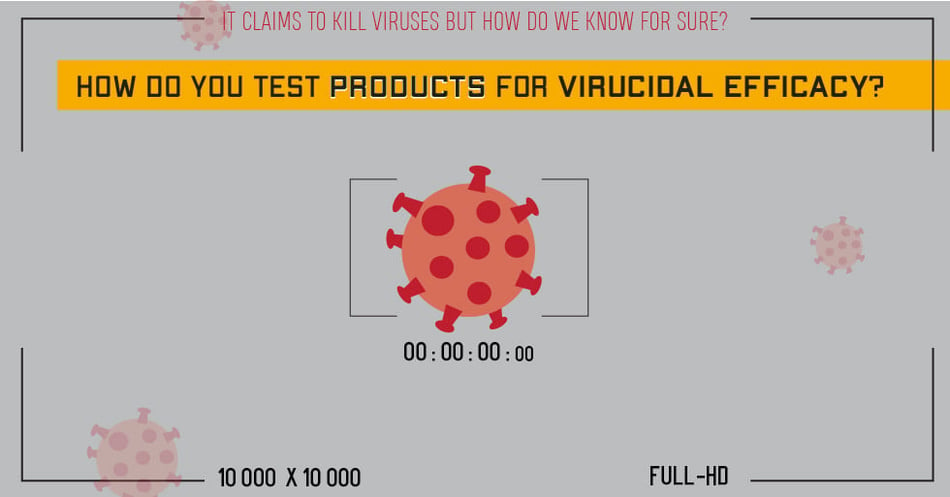How Do You Test Products for Virucidal Efficacy?

The COVID-19 pandemic led to an intense search for products that could help control the spread of that and other viruses, making the need for testing virucidal efficacy increase hundredfold. Products with current virucidal claims scrambled to secure a SARS-CoV-2 claim, while new products vied for the chance to be the "next new thing" that could help eradicate the virus from the air, our hands, and surfaces. The same thing happens whenever there is a new virus. But how are these tests conducted? In today's post, we'll explore how a lab can measure whether a product is capable of killing viruses.
When it comes to testing biocidal efficacy against bacteria, the process is straightforward. You take a sample of the pathogen, expose it to the product being tested, and then wait and see how much of it survives. You measure the survivors by a visual count, called colony forming units, via a conventional microscope or even with the naked eye.
This system is great for pathogens that are alive, single-celled organisms that are able to reproduce and draw energy from their surroundings. It works for organisms that can be seen with conventional microscopes. But viruses are not really alive - they won't reproduce into visually countable numbers on their own. They are so small that you need a scanning electron microscope to see one, and even then, not at a scale that indicates whether a surface is clean or not. You can't just swab a surface and look for viruses. (In fact, we didn't really start to know what they even looked like until the late 1930s, when the first electron microscope was invented.)
The solution is to measure not the virus itself, but the damage it inflicts on something we can count, animals cells. This is how it works (with some oversimplification for clarity).
-
-
-
- A sample of the virus is placed out into contact product being tested, for a set period of time.
- After the time has elapsed, the surface of the product is swabbed. If there are any remaining virus particles on the surface, they will be collected by the swab.
- The swab is then transferred to animals cells cultured on a petri dish. The dish is sealed, and then you wait for the incubation period for that particular virus. This would be 1-2 days for influenza, or 7-10 days for SARS-CoV-2. During this time, if there were any viable virus particles transferred from the surface, they will infect the animal cells and destroy them.
- After the incubation period, the animal cells are examined under a microscope. The number of destroyed cells is counted, revealing how much of the virus survived the product being tested.
-
-
And that's it! If you can't measure something directly, you measure it's impact on something you CAN measure. It takes a lot more time, since we have to wait for the incubation period, but overall the method hasn't changed much in 100 years. In fact, viruses were first posited to exist when scientists found that some kind of organisms could affect the bacteria cells they were studying, even after filtering out contaminants. We may know much more about viruses today, but we still rely on this basic method to test for the presence (or elimination) of viruses.
![EOScu Logo - Dark - Outlined [07182023]-01](https://blog.eoscu.com/hubfs/Eoscu_June2024/Images/EOScu%20Logo%20-%20Dark%20-%20Outlined%20%5B07182023%5D-01.svg)
